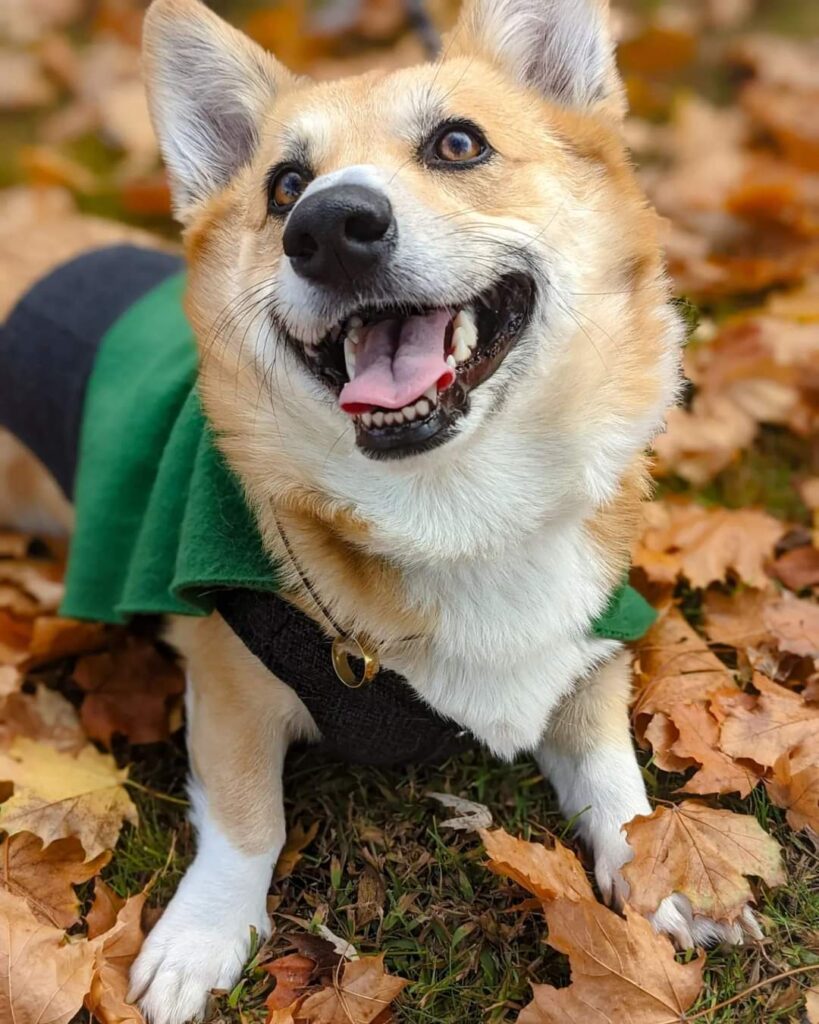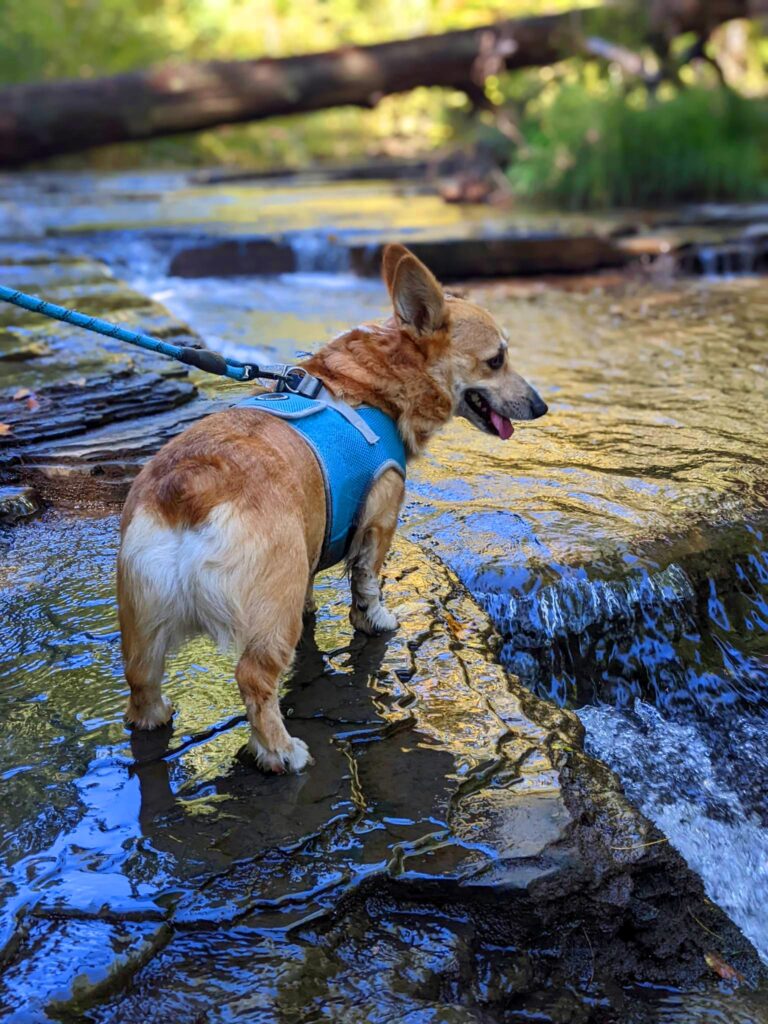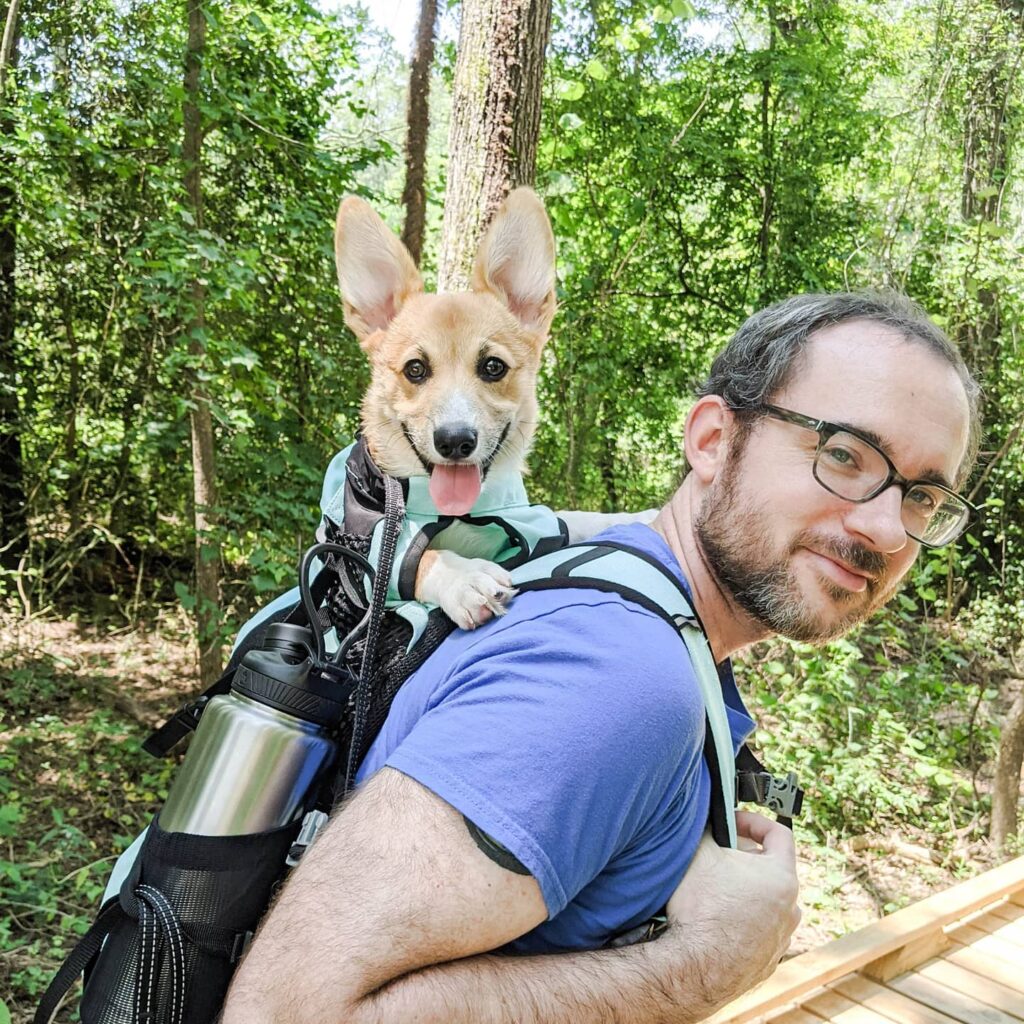10 tips and 5 locations to hike with your dog in the Capital Region

Hiking with your furry friend can be an incredible bonding experience and a great way for both of you to stay active. For Bilbo Waggins (pictured here) and me, it’s our primary way to keep fit. But as important as fitness is, it’s also important to think about how to safely hike with a dog of any size.
Before you hit the trail, check out my list of dos and don’ts.
10 Tips
Do: Train your dog
As a first step, ensure your dog is trained to behave appropriately on the trail. This includes obeying commands, walking on a leash, and not getting distracted by other animals or hikers. You can start by practicing basic obedience commands in a controlled environment and slowly introduce your dog to following the same directions outdoors.
Be patient – it can take a while before they’re ready. To be honest, it took months before Bilbo was well-trained on leash, and he sometimes still needs redirection.

Don’t: Overestimate your dog’s
(or your) abilities
Dogs can be great hiking companions, but it’s crucial to remember they have physical limitations. Before heading out on a long hike, make sure your dog is physically capable of completing the trail. Be mindful of your dog’s age, breed, and health conditions that may impact their endurance and agility. If you aren’t sure, don’t take them.
Do: Pack for your dog
Just like humans, dogs need supplies on the trail. Pack plenty of water and food for your four-legged pal, as well as medications they may need. Bring a first-aid kit that includes items like paw balm, bandages, and tweezers to remove any ticks or thorns.
Ticks are a major concern in New York since many carry Lyme disease, so talk to your vet about preventive medications your dog may need before hiking.
Don’t: Forget about wildlife and plants
You should be mindful of the wildlife and plants around you when hiking with your dog. Keep them on a leash to prevent them from chasing after animals or getting lost. Keep them away from poisonous plants or anything that may be harmful for them to eat. Bilbo is always looking for second breakfast, so I’m constantly on the lookout!
Do: Plan for breaks

Hiking can be a physically demanding activity for both humans and dogs. Plan for breaks throughout the hike to allow your dog to rest and hydrate. (Don’t forget about yourself!) When it’s hot, choose a shaded area or cool off in clean water if there’s some nearby.
Don’t: Leave your dog’s waste behind
Always carry out your dog’s waste and dispose of it properly. Leaving dog waste on the trail can be problematic for other hikers and the trail maintenance staff.
Do: Check for local regulations
Before heading out on a hike with your dog, check for local regulations or restrictions that may impact your plans. Some hiking trails have specific rules around dogs, such as requiring them to be on a leash, or they may prohibit dogs altogether. Breaking these rules can sometimes come with a hefty fine, so it’s best to know before you go.
Don’t: Force your dog to continue if they’re tired or injured

If your dog is showing signs of fatigue or injury, don’t force them to continue. Pay attention to your dog’s body language and behavior and be willing to adjust your plans if needed. Continuing to hike with a tired or injured dog can lead to further health complications.
Having a way to carry your dog if needed can be helpful. That’s why I take a K9 backpack anytime I go hiking with Bilbo. Carrying his 35 pounds in my arms gets heavy fast, especially when I’m already tired from hiking. Putting him in a backpack does the trick when he tires before we’ve made it back to the car.
Do: Protect your dog from the elements
Take precautions to protect your dog when hiking in more extreme temperatures. In hotter weather, bring extra water to keep them hydrated and consider using dog-specific sunblock to protect their skin from the sun. (Don’t use human sunblock on a dog – it’s harmful!) In colder temperatures, bring extra layers for your dog, such as a jacket or booties to protect their paws from the cold and ice.
The rule of thumb for heat is if the pavement is too hot for your hand after 10 seconds with your palm face down, it’s too hot for your dog to walk on. The same can be said about sand and dirt, so don’t think just because it’s not asphalt that it won’t be too hot.
Don’t: Assume your dog is always welcome
Many hikers and other dogs are dog-friendly, but not everyone loves our canine friends as much as we do. If you come across a hiker who looks scared or a dog that is acting aggressively, move to the far side of the trail as safely as possible to avoid any conflict. And if another hiker asks to pet your dog, be courteous and move to the side so others can pass.
Hiking with dogs can be a fun and rewarding experience. With proper training, planning, and supplies, you and your furry friend can enjoy the great outdoors safely and responsibly.
5 Capital Region locations
Not sure where to start hiking with your pup? I’ve got a few options worth a look!
- Thatcher State Park: Located in Voorheesville, the beauty of Thatcher is that there are so many different areas you can hike. Choose between shorter or longer routes depending on your comfort level. Some trails like the Paint Mine Trail even offer wheelchair access (with some assistance).
- Schodack Island State Park: A bit southeast of Albany in Schodack Landing, this park has a multi-use paved trail that can help with accessibility as well as training for new hikers. Bonus: You’ll be right next to the Hudson River, which makes for some great views!
- Albany Pine Bush Preserve: Found on New Karner Road in Albany, the preserve offers a variety of trail types and locations, all of which are dog-friendly for pups who are on leash. The preserve also has an interactive map you can check on your phone to see real-time which trails are open and closed. Please note that during local events, dogs are not allowed at the preserve.
- Plotter Kill Preserve: This Rotterdam location is close to home for me, and one of my favorites. If you see me out there, feel free to stop and say hello! The Plotter Kill Preserve offers a running creek as well as a large forest. After a heavy rain, be ready for plenty of mud! This is not an accessible trail for wheelchair users and doesn’t offer any paved areas for beginners.
- Hudson Crossing Park: Dog-friendly as long as they are on leash, this Schuylerville park offers various trails with a variety of uses. It also offers some amazing views of the Hudson River and Champlain Canal. Parts of these trails are wheelchair accessible, though some may not be.
Looking for even more dog-friendly trails to try? Check this out.
Many trails change their requirements depending on weather and other reasons throughout the year, so always check trail information at the location’s website before visiting.
You can find more information on hiking on the NYS Parks blog.
These are just a few of my favorites. What trails do you love to hike or looking to try this year? Let me know and maybe I’ll see you out there!
Taking a hike? Sign up for the CDPHP Health Hub, powered by Virgin Pulse to log your activity and track your path to better health. The CDPHP Health Hub can be accessed from your smartphone or computer, giving you 24/7 access to powerful wellness resources right at your fingertips.
If you’re a CDPHP member, you may even earn CDPHP Life Points® Rewards, redeemable for valuable gift cards!*
*Not all plans include CDPHP Life Points Rewards.
 The Daily Dose
The Daily Dose
Comments are closed.